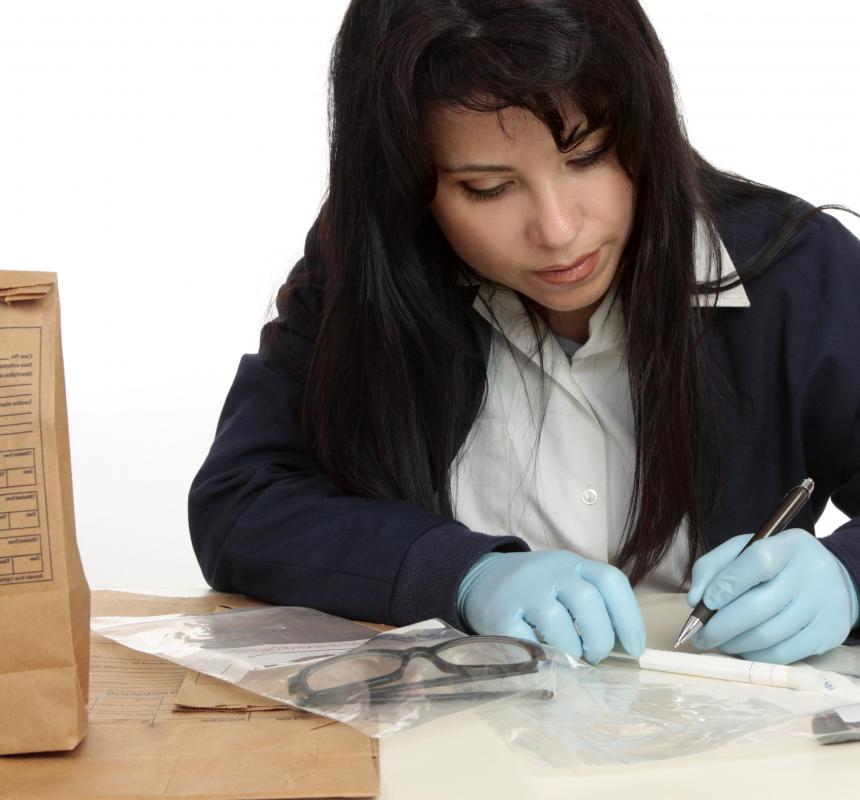At WiseGEEK, we're committed to delivering accurate, trustworthy information. Our expert-authored content is rigorously fact-checked and sourced from credible authorities. Discover how we uphold the highest standards in providing you with reliable knowledge.
How Do I Become a Fingerprint Examiner?
The first step to become a fingerprint examiner is getting an undergraduate degree in a science-related field. Most examiners then complete an internship or training program. Getting voluntary certification as a Certified Latent Print Examiner (CLPE) is the last step needed to apply for most fingerprint examiner jobs.
Some employers accept an associate’s degree from fingerprint examiner applicants, as applicants can learn on-the-job. Four-year degrees are the industry standard, however. The bachelor’s degree should ideally be in forensic science, but degrees in criminal justice are equally desirable due to the fact that most fingerprint examiners aid in law enforcement. One also can become a fingerprint examiner by getting a degree in biology, chemistry or a similar area, as these areas provide the foundation for understanding how fingerprints form, why they are unique, and how an examiner physically collects and preserves the prints he finds.

Following the completion of an undergraduate degree, aspiring fingerprint examiners enter a formal fingerprint examiner program, or fingerprint-based internship. These programs are available through sheriff and police departments, as well as crime laboratories. Some technical colleges offer training, too. Online classes are an option in some instances, but one still needs hands-on experience to become a fingerprint examiner.
Training programs designed to let one become a fingerprint examiner vary widely in length. They can last anywhere from two weeks to two years, depending on what kind of degree one has, which organization is providing the courses and the jurisdiction in which the fingerprint examiner wishes to apply. Most programs offer core classes like fingerprint analysis, print features, fingerprint integrity preservation and court testimony.
One does not need to get certified to become a fingerprint examiner. Those who do have certification, however, have more clout with employers and are respected by others in the fingerprint and criminal justice fields. The primary agency that offers fingerprint examiner certification is the International Association for Identification (IAI).
Individuals who want to become a Certified Latent Print Examiner through IAI must meet rigorous requirements. These include a minimum of 80 hours of certification board-approved technical training, two years full-time experience, completion of a three-part examination and an oral board test or presentation of case. When all these requirements are fulfilled, the IAI certification board reviews the examiner’s application and either issues certification or rejects the application.
The fingerprinting field, like other industries, evolves over time. For instance, advances in technology let examiners adapt how they view the prints they find or match them to prints already in a database. IAI thus requires those who hold CLPE status to get a minimum of 80 hours of continuing education every five years and take a recertification exam to maintain their standing.
AS FEATURED ON:
AS FEATURED ON:











Discuss this Article
Post your comments